
72 COLNAGO SUPER
_______________________________________________________________________________________________________________
This is what I received, straight out of the box - but I did clean the frame before taking these photos.
_______________________________________________________________________________________________________________



This Ideale saddle will be replaced with a more correct Unicanitor, as per the Colnago Super Pantografata catalog page.

The seat post will be cleaned and hand-polished with Simichrome to bring out the shine, but I will not be doing a full-on machine polish, nor will I repaint the flutes.

The rear derailleur is marked Patent 72.

The REG covers were not factory spec'd, but I have a feeling they are part of the original build, so I'm going to keep them.




This the Colnago Merckx-style drilling, which as far as I know, pre-dates the 73 Pantografatas.



The Colnago Super Pantografata catalog page shows yellow housing, so I am going to reuse these.

That is white electrical tape over the bar. I removed it and found black cotton tape underneath. I'll be using white cotton tape.

These Cinelli bar end caps definitely look the same age as the bike - yellowed and no longer supple, but still usable, so they're staying.




The hoods didn't look too healthy but they've responded very well to treatments with Armor-All Low Gloss (in fact they've made an incredible recovery), so I will be keeping them.


The levers show marks of use but are still very presentable, and with the round hole underneath, I think they're original to the bike, so I will keep them and leave them as is (i.e., no polishing).






The stem is in good condition but the post shows insertion signs. Normally I would remove the anodizing and polish it, but for this build I want to keep the bike as original as possible, so I will use it as is.

This older style Silca is probably original to the bike, but it still works - other than the rubber feet which fell apart in my hands.
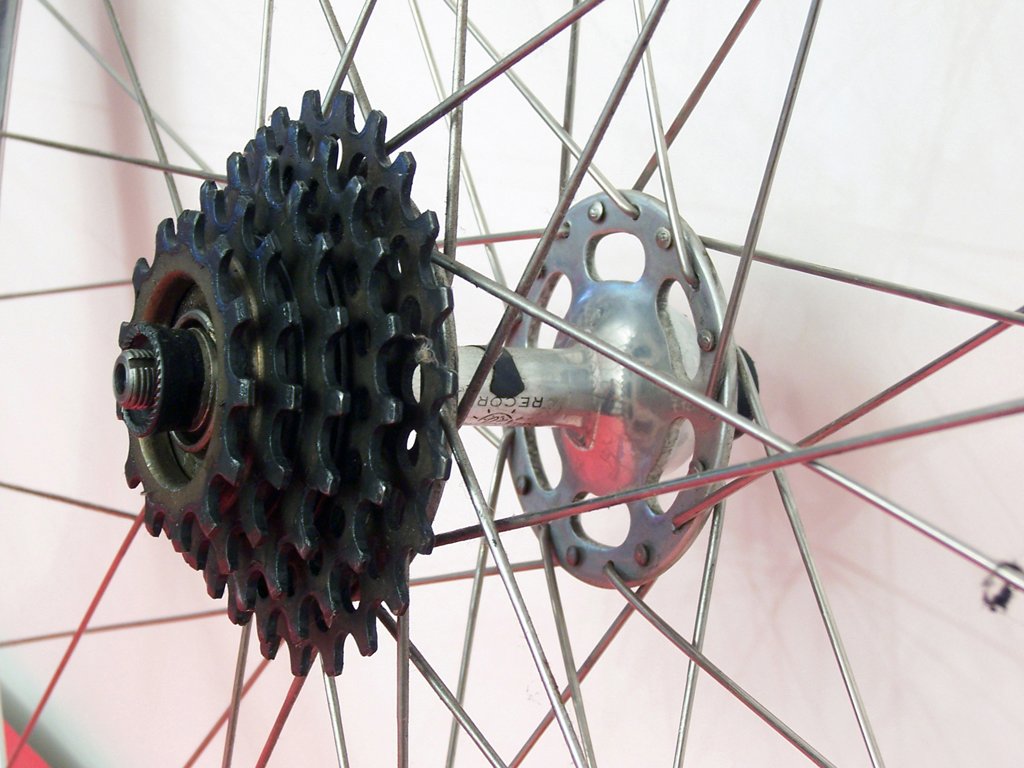
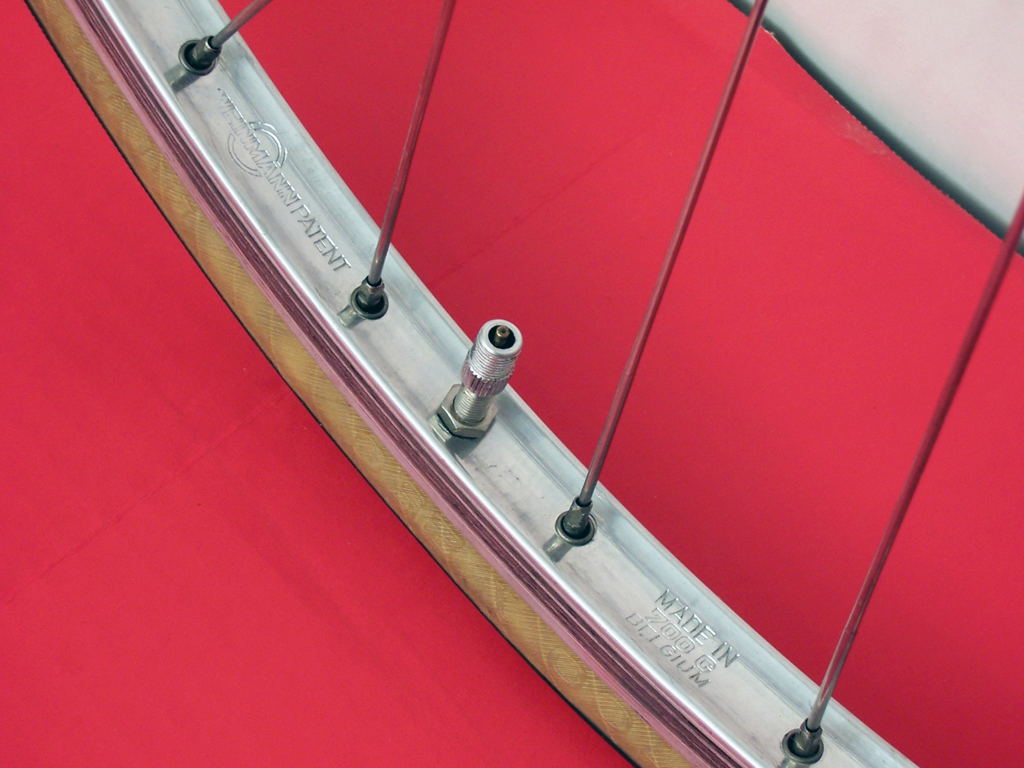
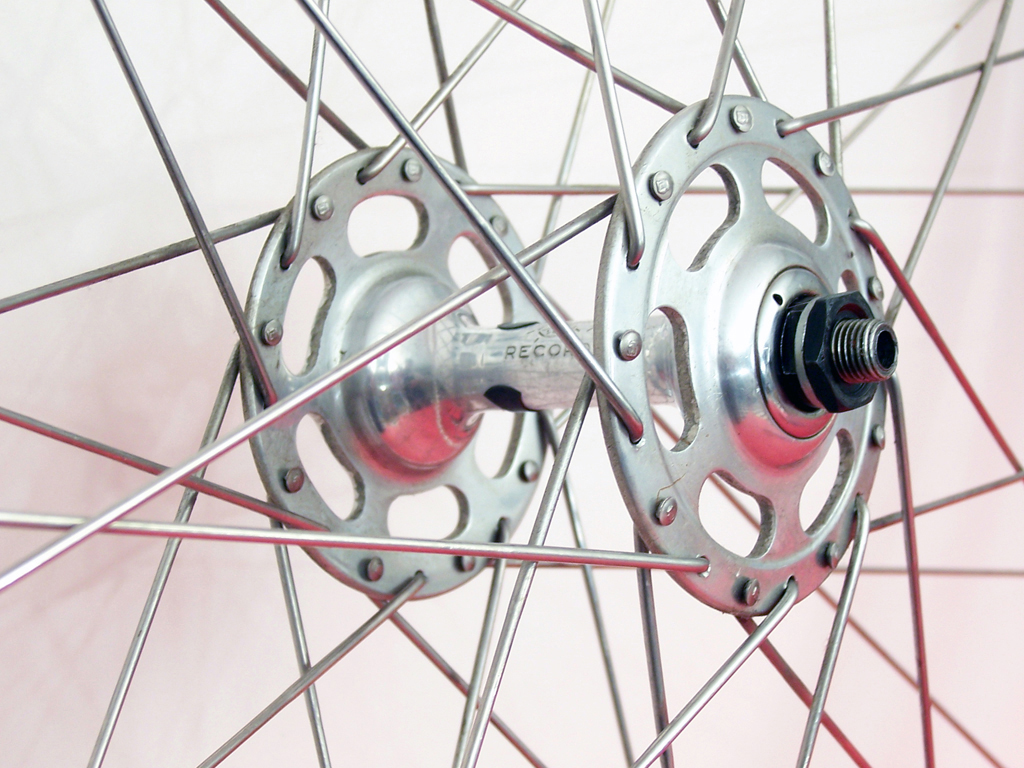
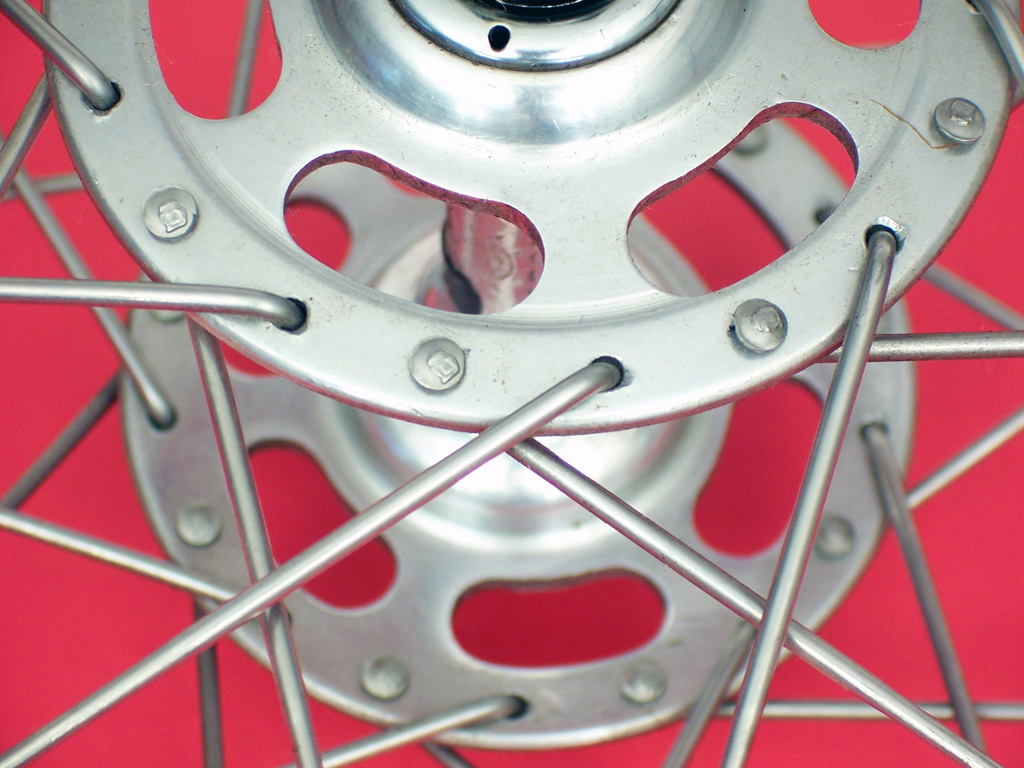
The seller told me these hubs are original to the bike, but he had them rebuilt with clincher rims. I'll be keeping the wheels for riding, but may show the bike with a more correct set of wheels and tires.
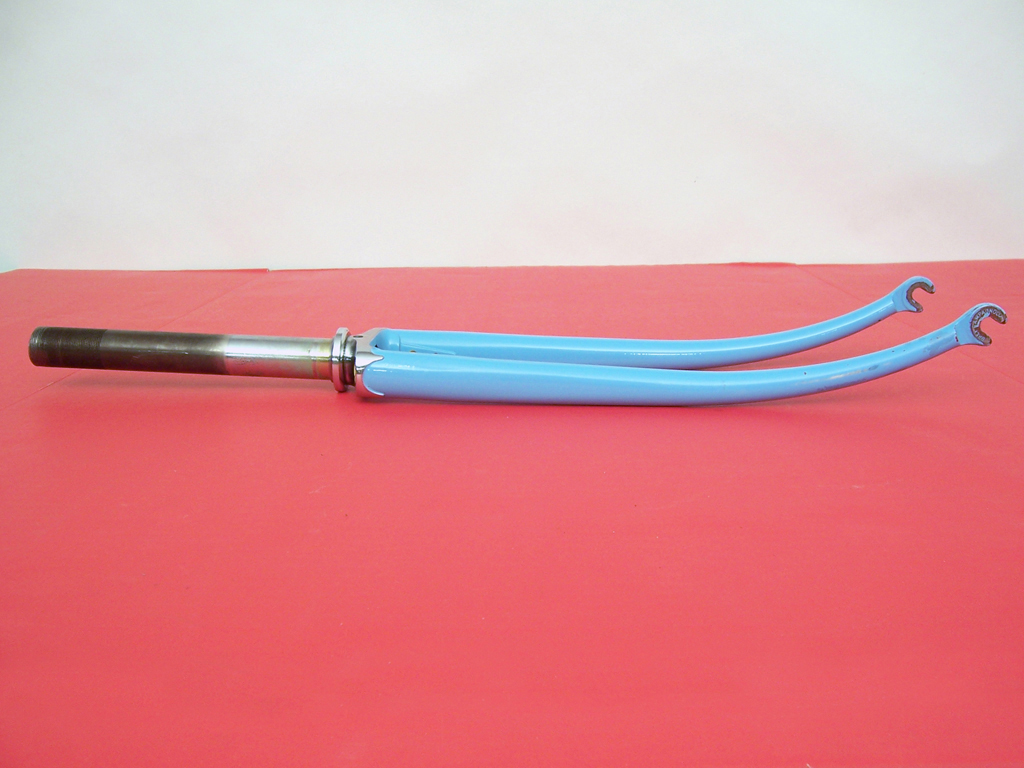
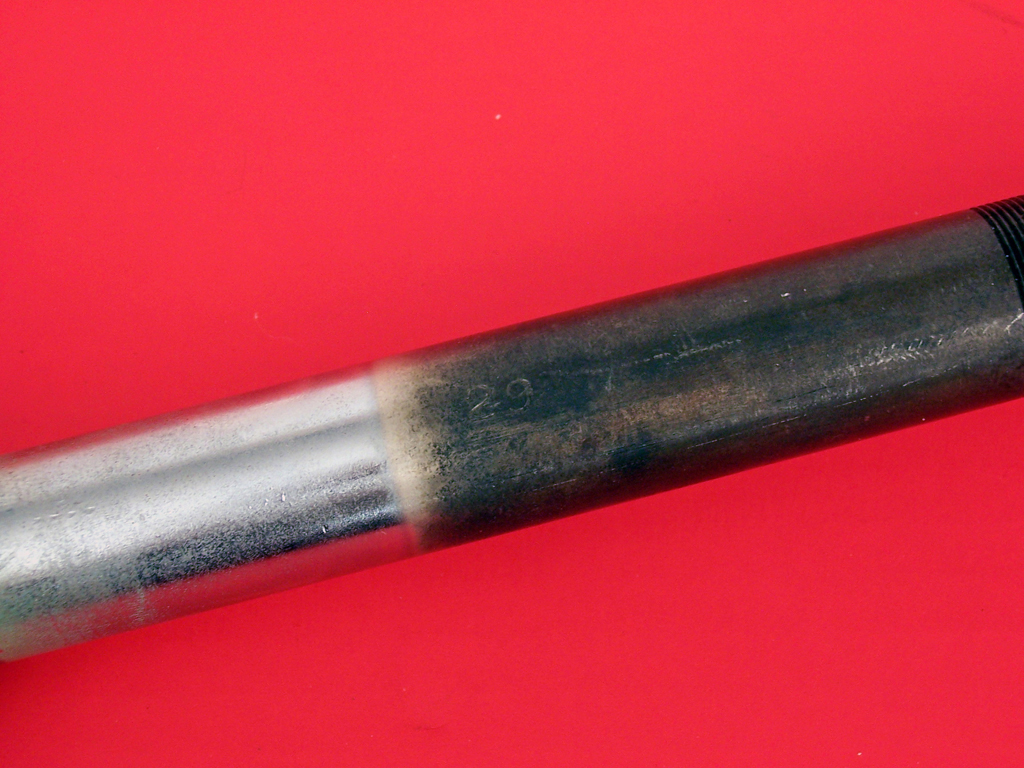
The 29 stamp on the fork steerer tube matches the 29 stamp on the right dropout, so at least I know the frame and fork are original to each other.
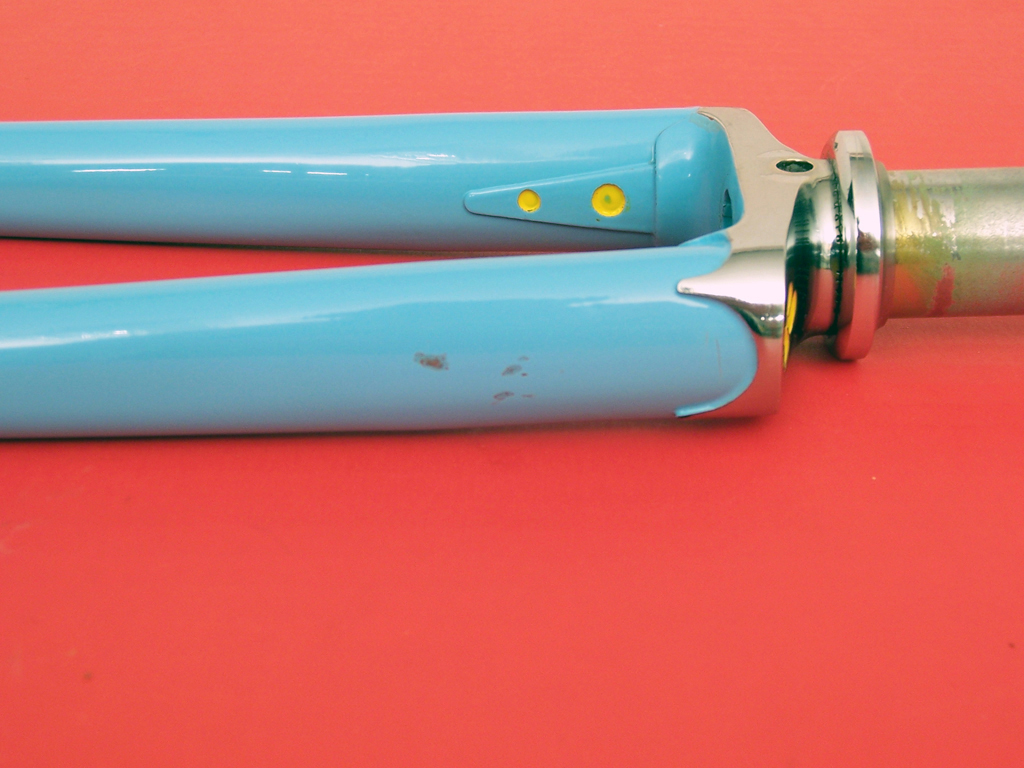
These scratches happened during shipping due to poor packing. But this is all that happened, so considering all the horror stories I've heard, I won't complain...too loudly.
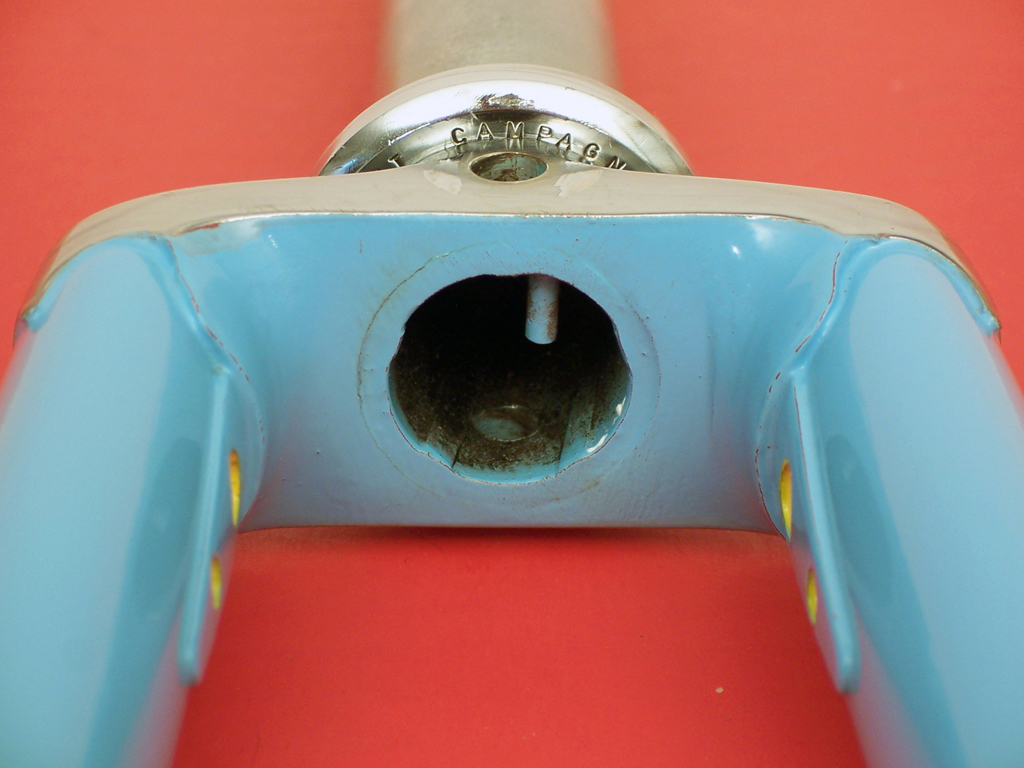
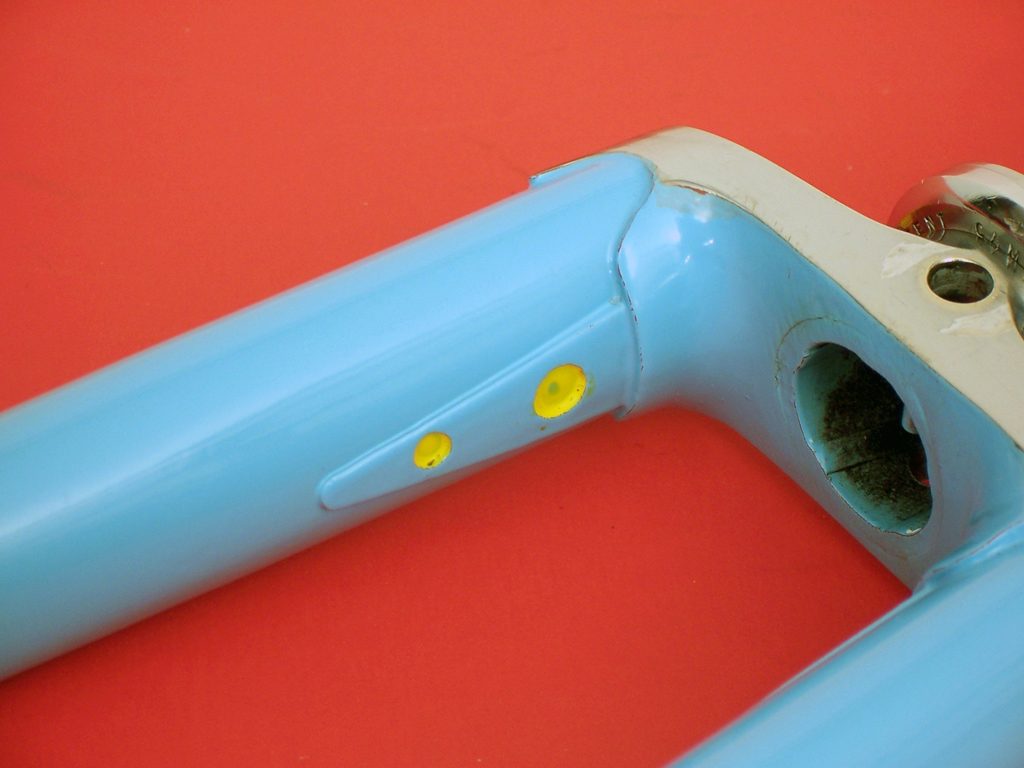
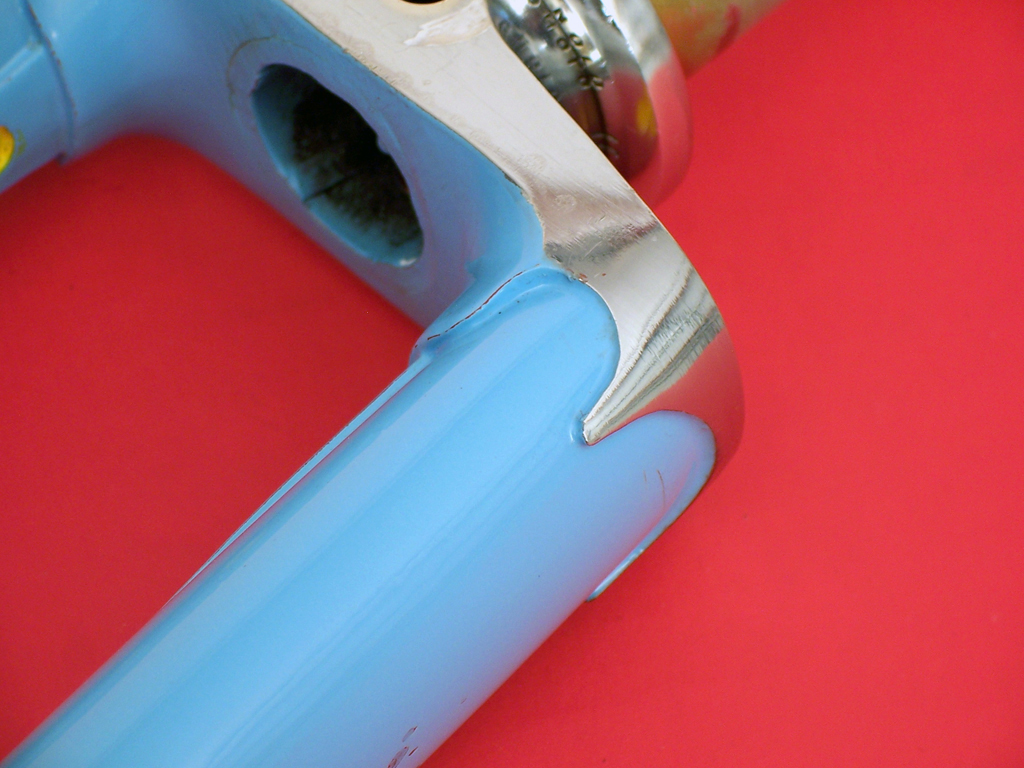
The chrome on the fork crown is practically perfect. This bike must have been kept indoors all its life.
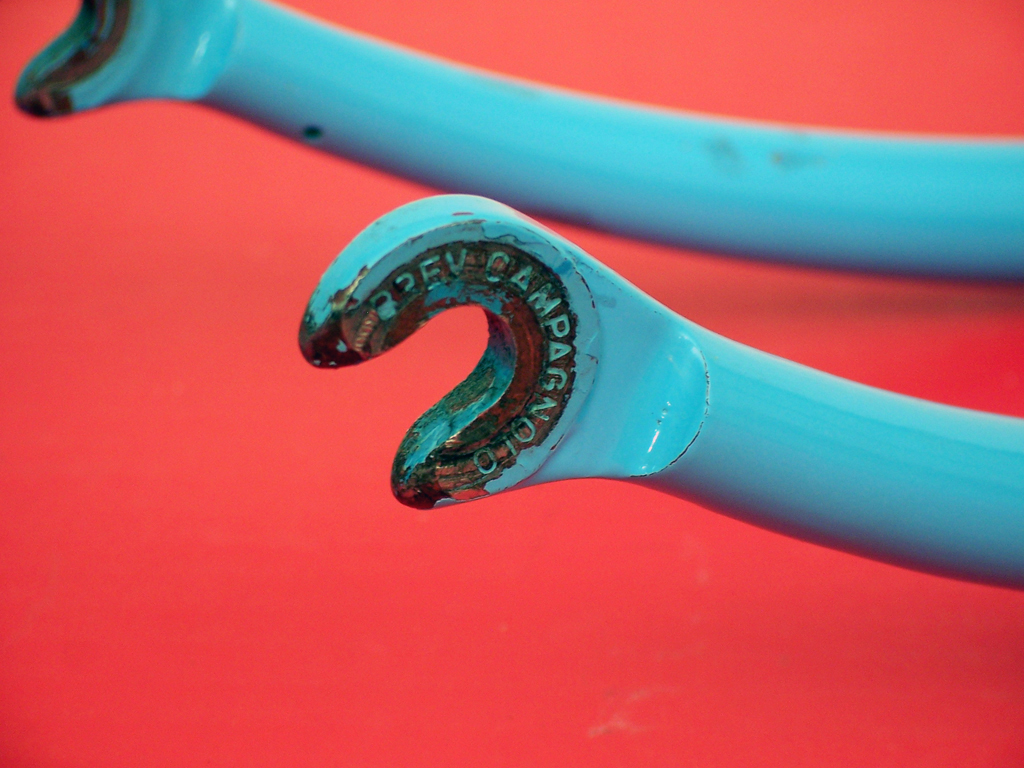
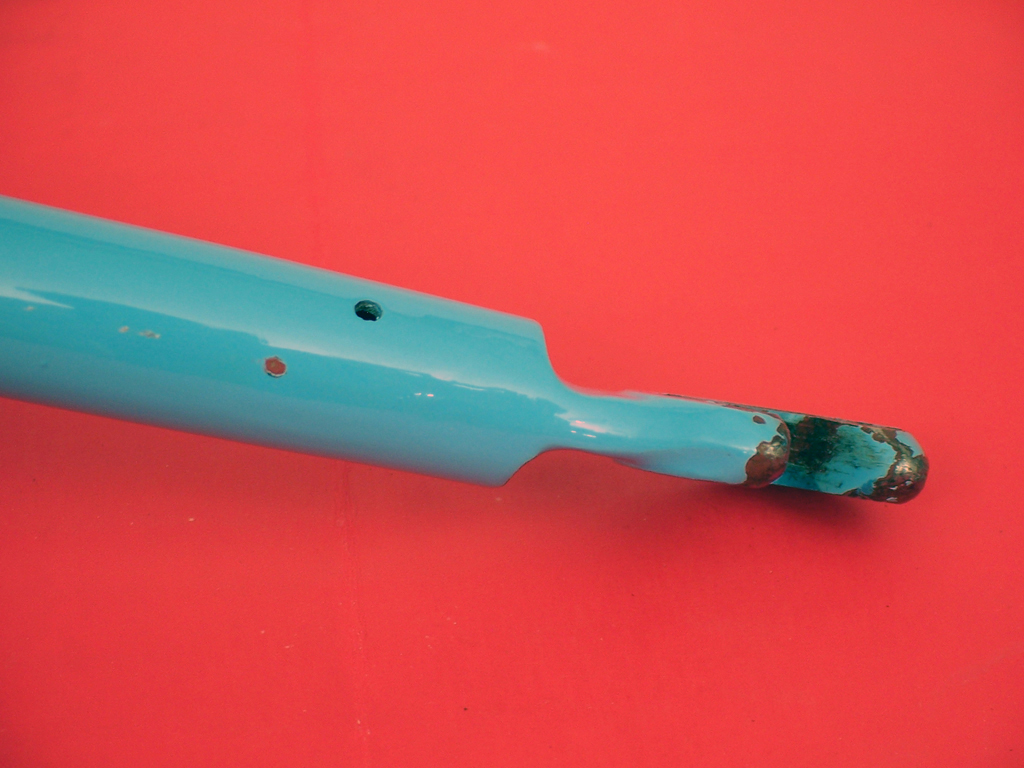
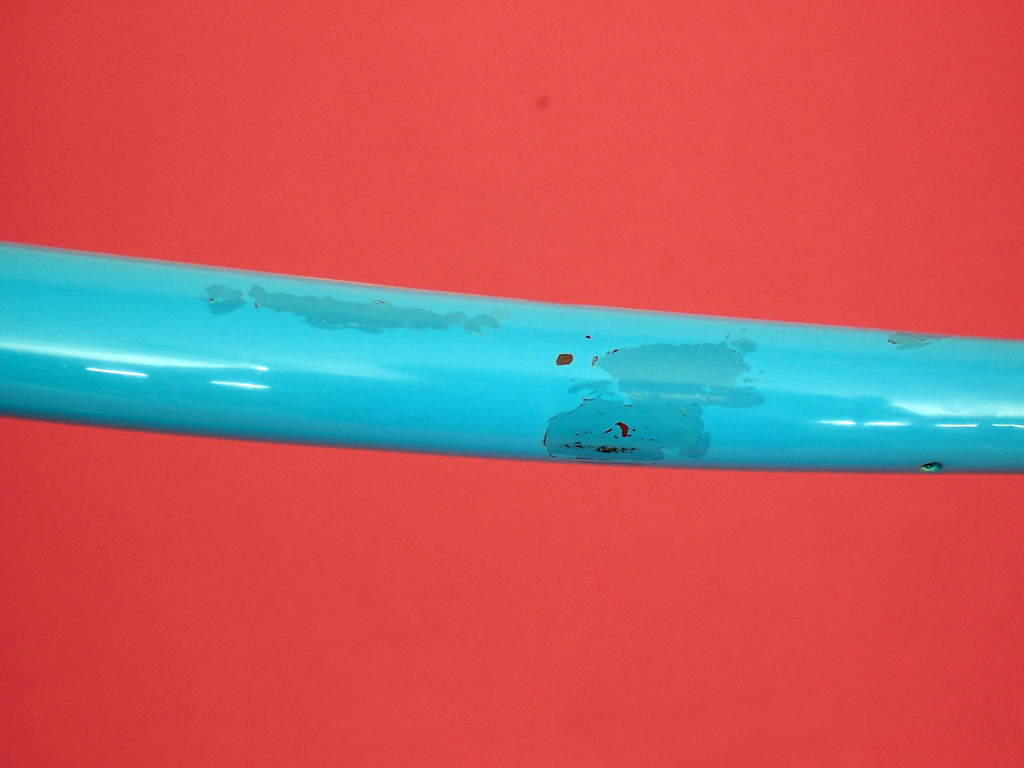
Evidence of prior touch-up efforts (A for effort, D for color matching).
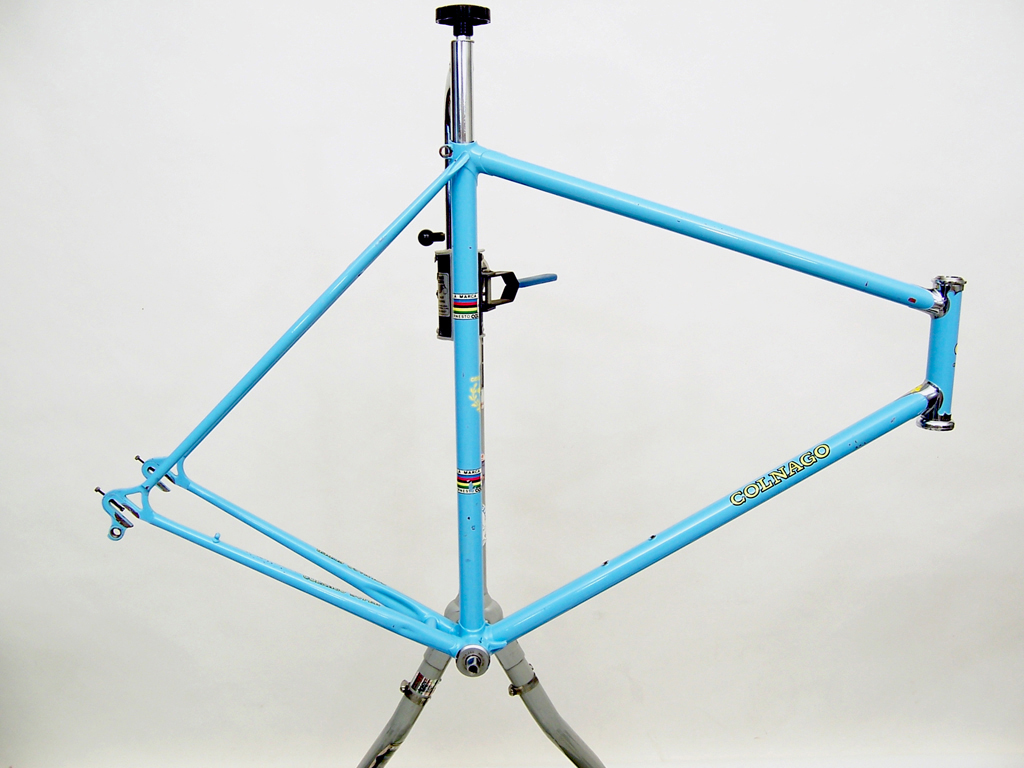
As you will see in the following photos, the paint on the entire frame is consistently smooth, bright and even, with no hazing, crazing or cracking. But based on the numerous paint chips, it seems like the the finish is very delicate. I'm no paint expert but I think this is due to the lustrous but thin and brittle lacquer paint used back then. (By the way, I did clean the frame before taking these pics.)
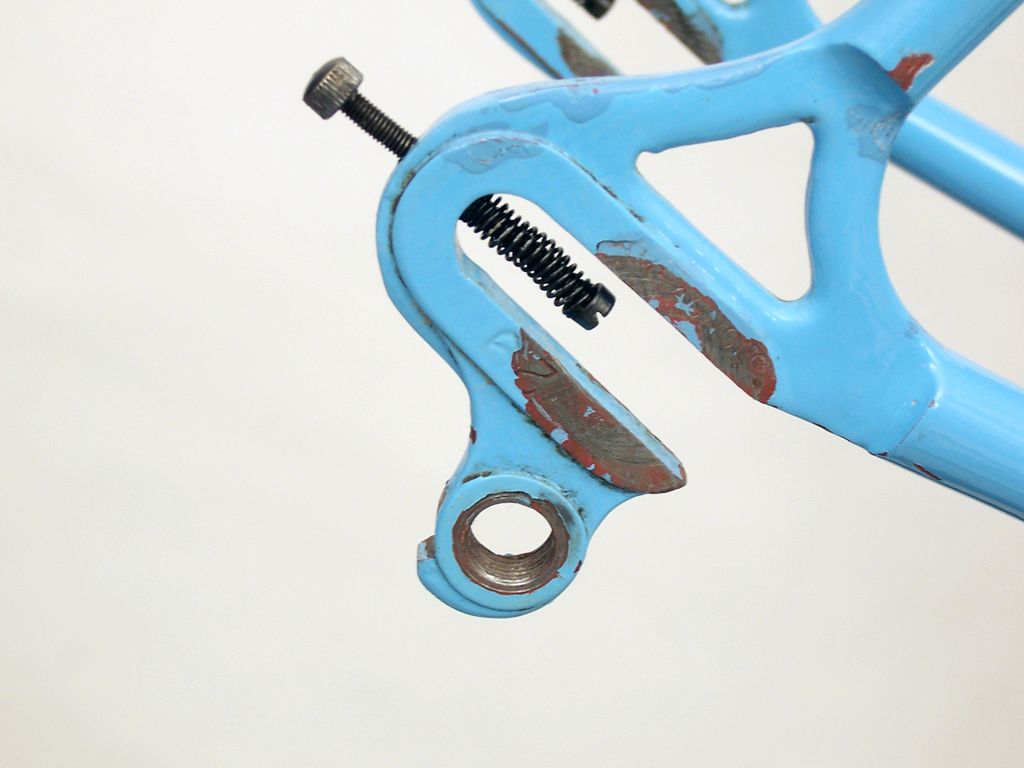
There's the 29 stamp which matches the stamp on the fork steerer tube.
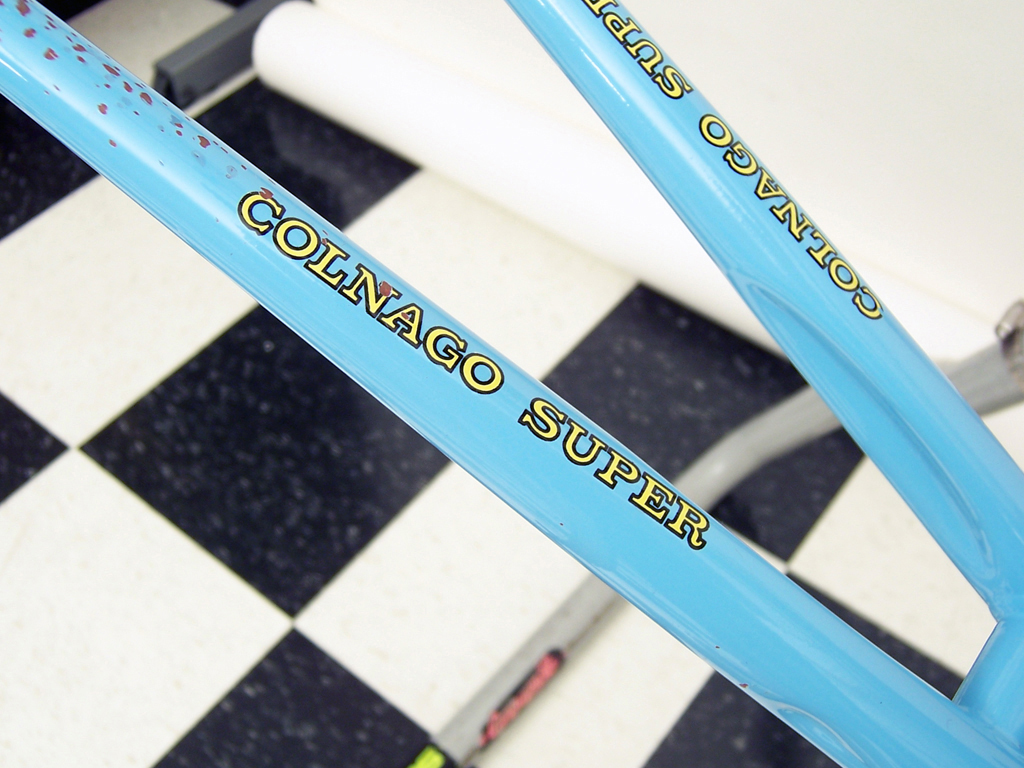
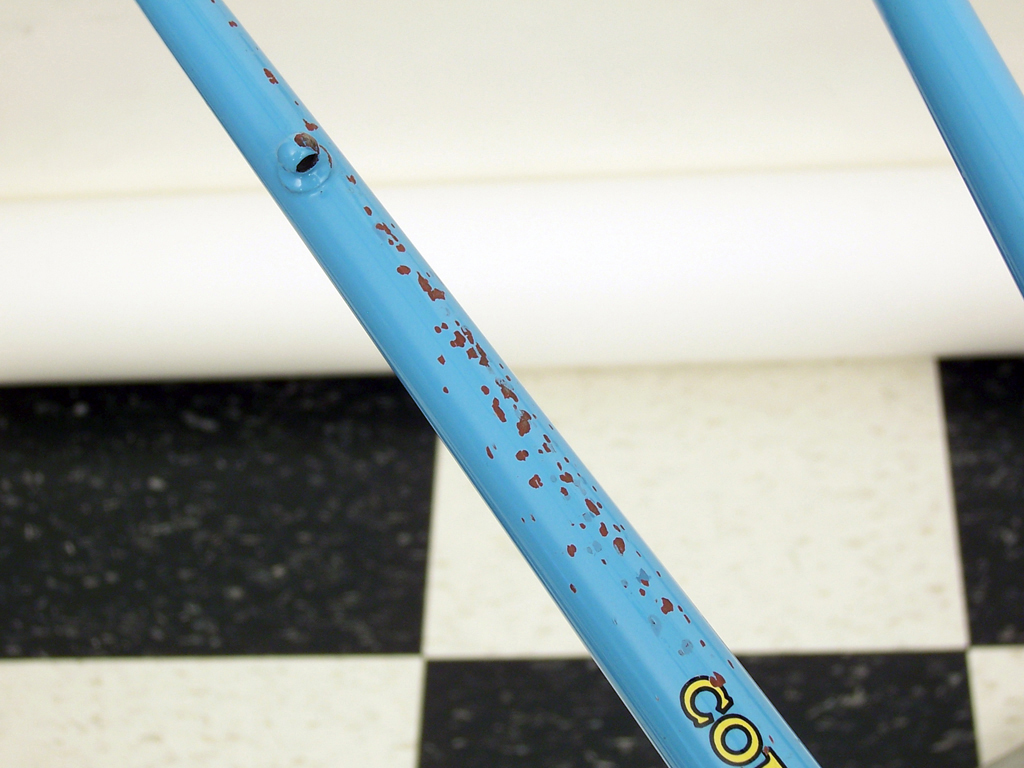
I had the exact same pattern of chips on my other 72 Super. Modern paints seem to be far more resistant to this type of chain damage.
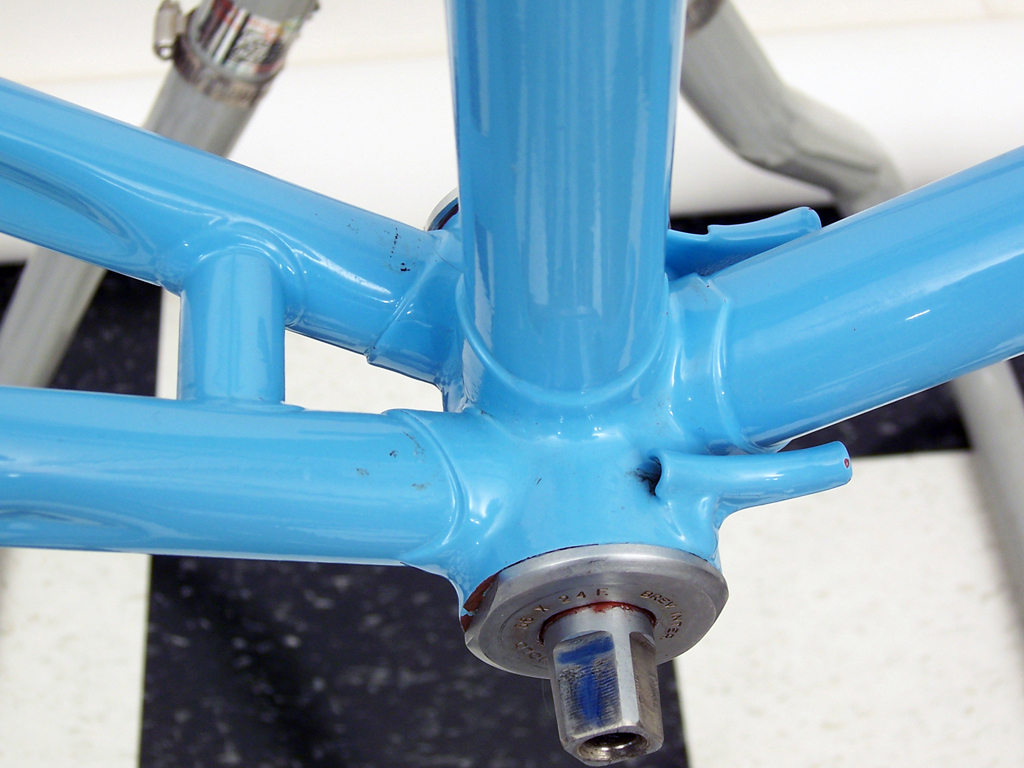
The blue on the axle must have been a reflection because there is no sign of it now.
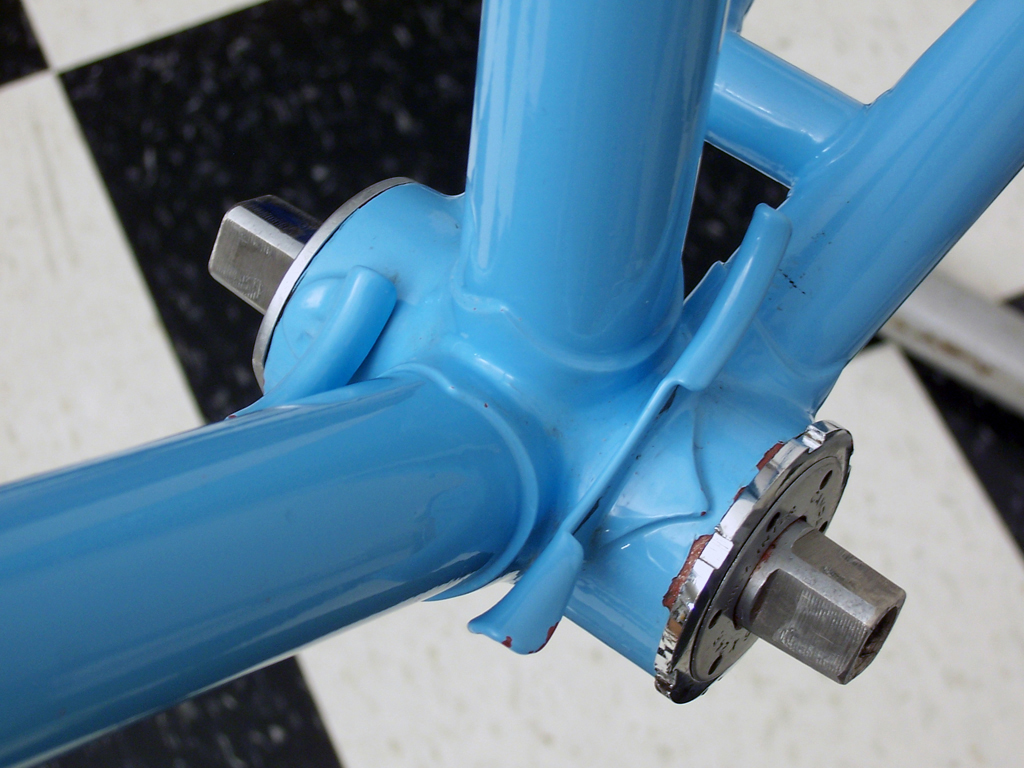
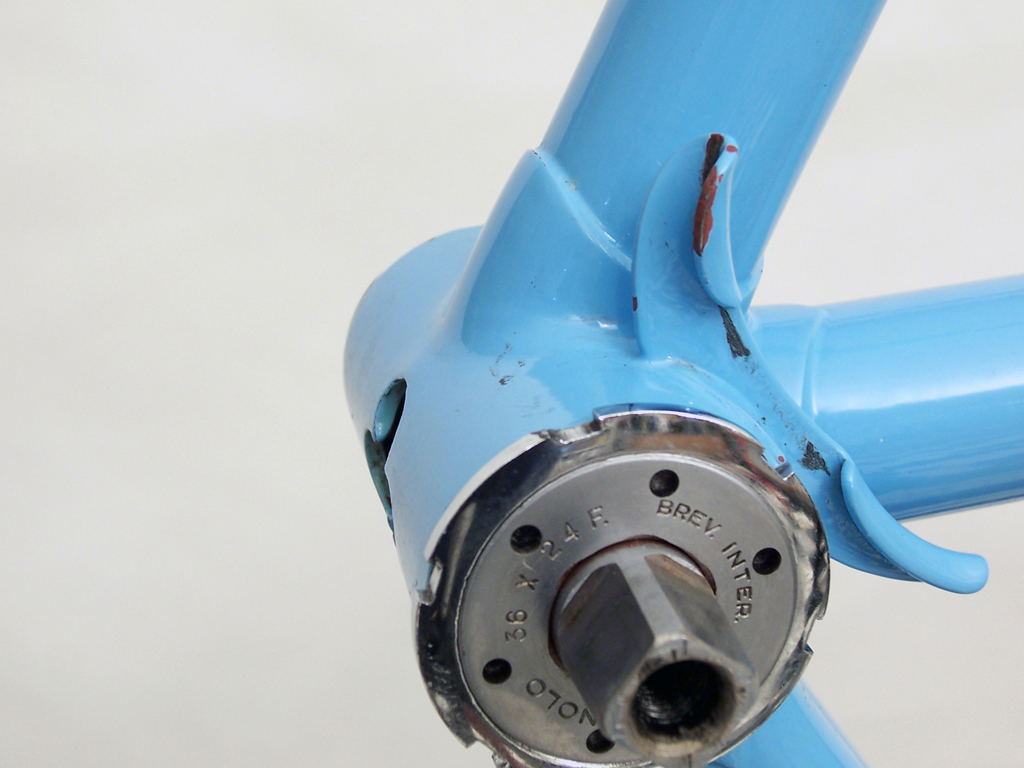
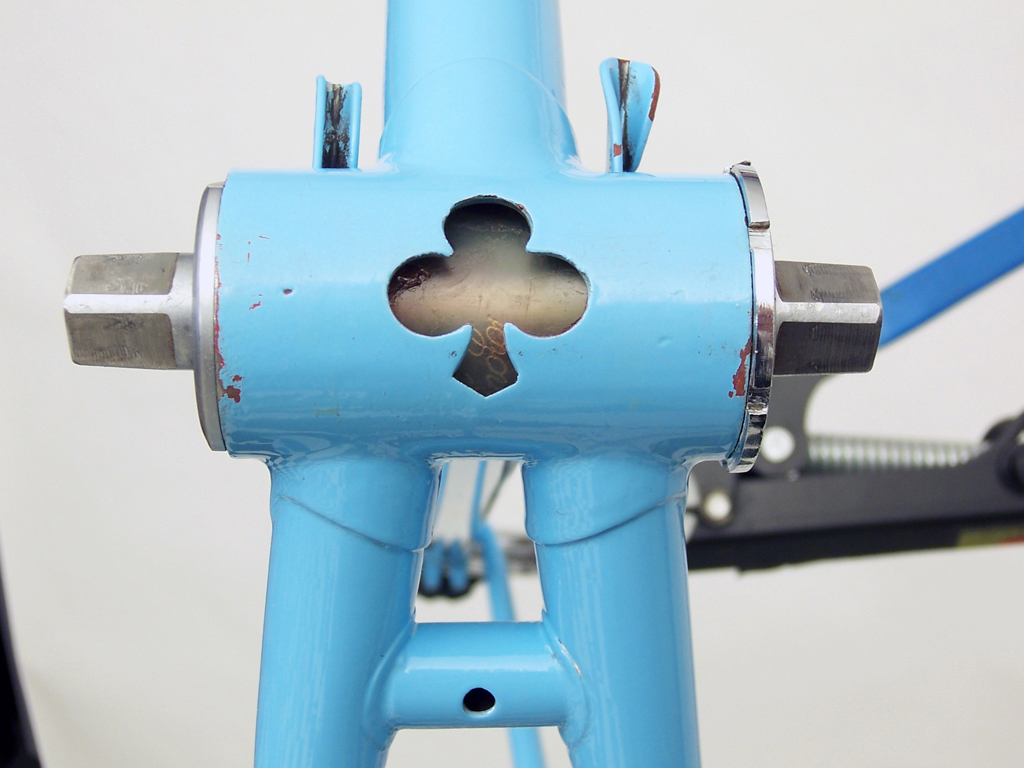
Oh the horror! The BB plastic sleeve is not oriented so the Campagnolo script is fully visible! Bad mechanic, bad!
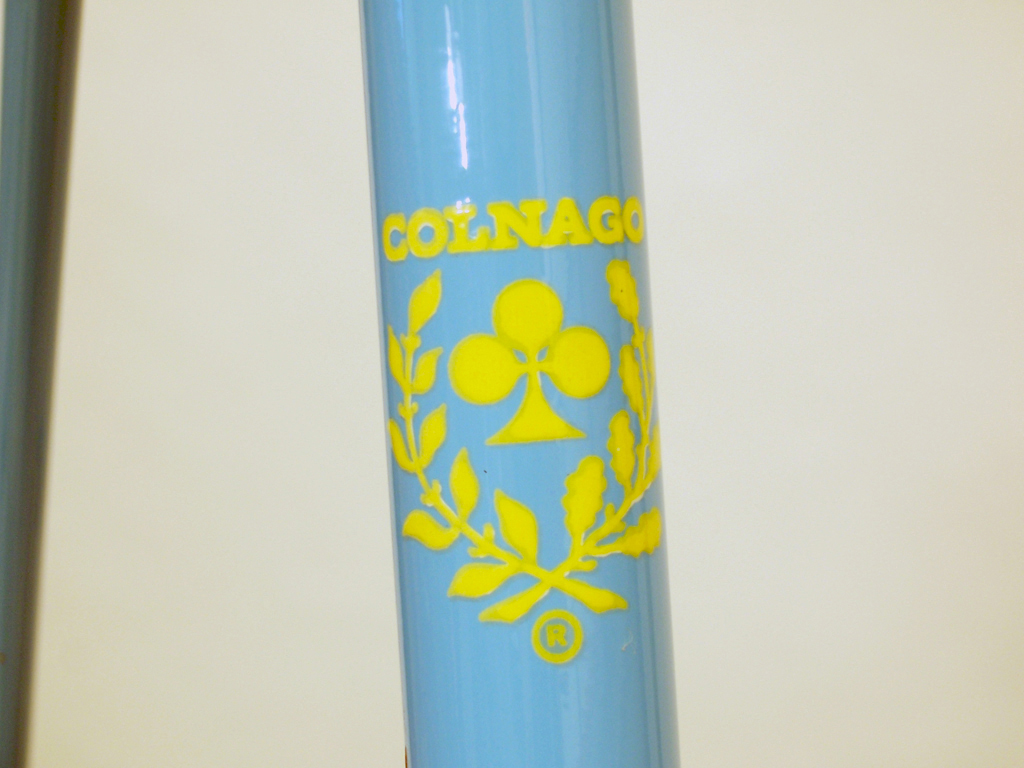
The classic imperfect seat tube decal, just as it should be.
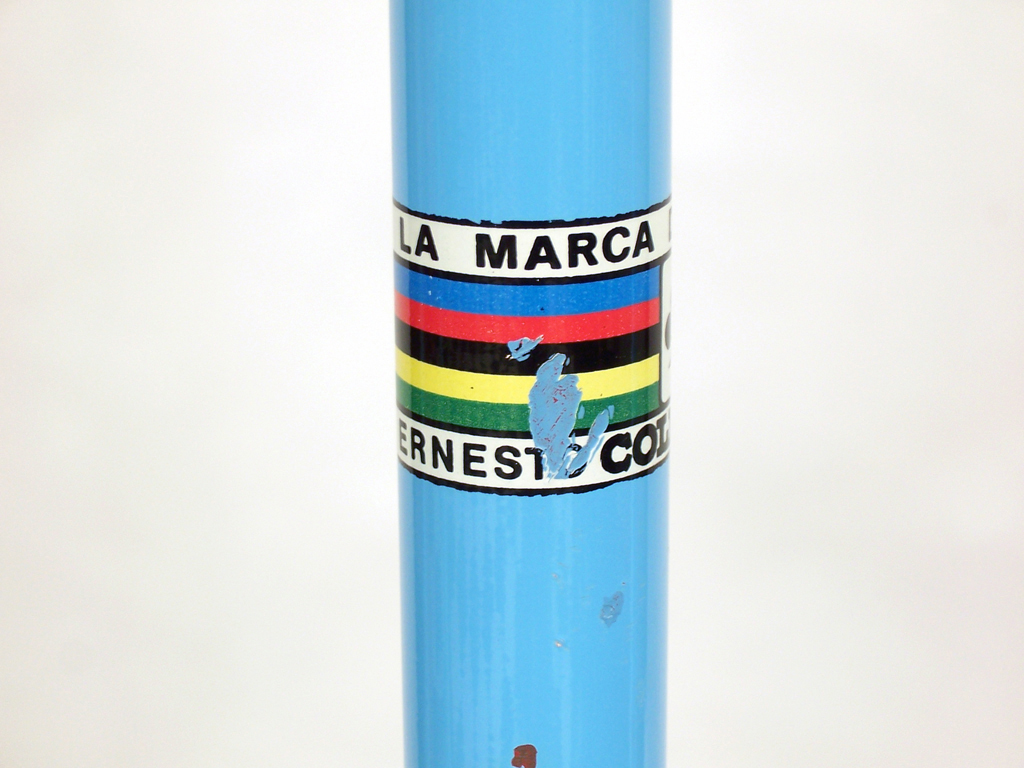
I'm not even going to bother trying to touch-up this decal.
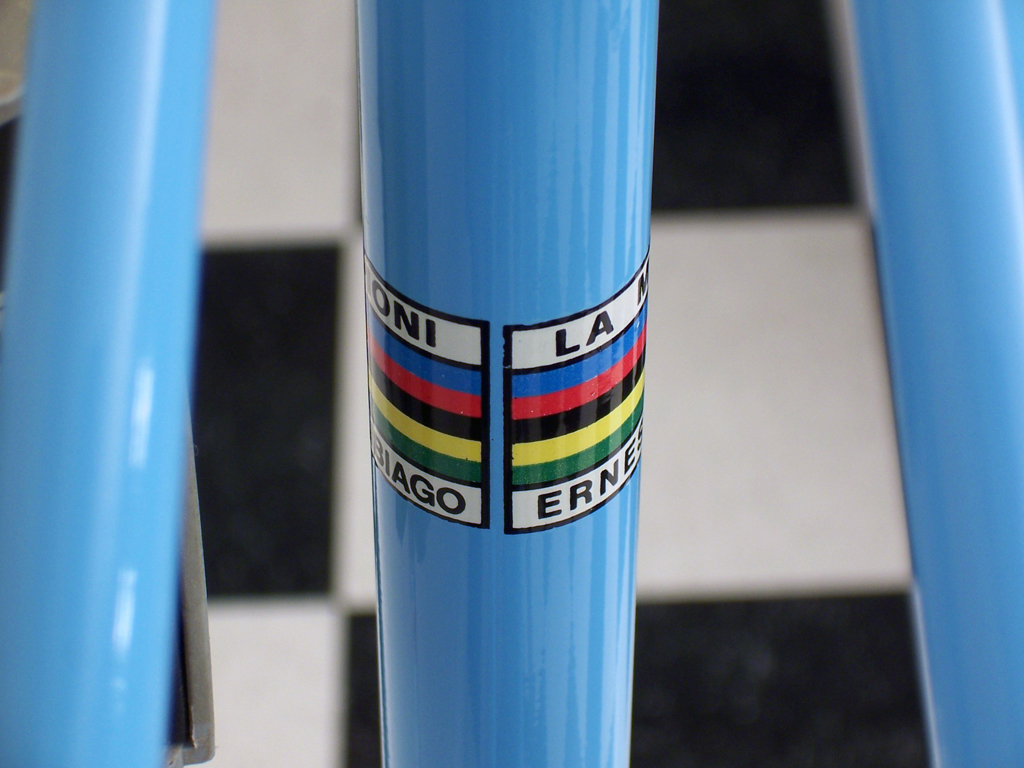
Interesting - if your decals don't meet perfectly in back, don't worry - I guess that's the way they were made.
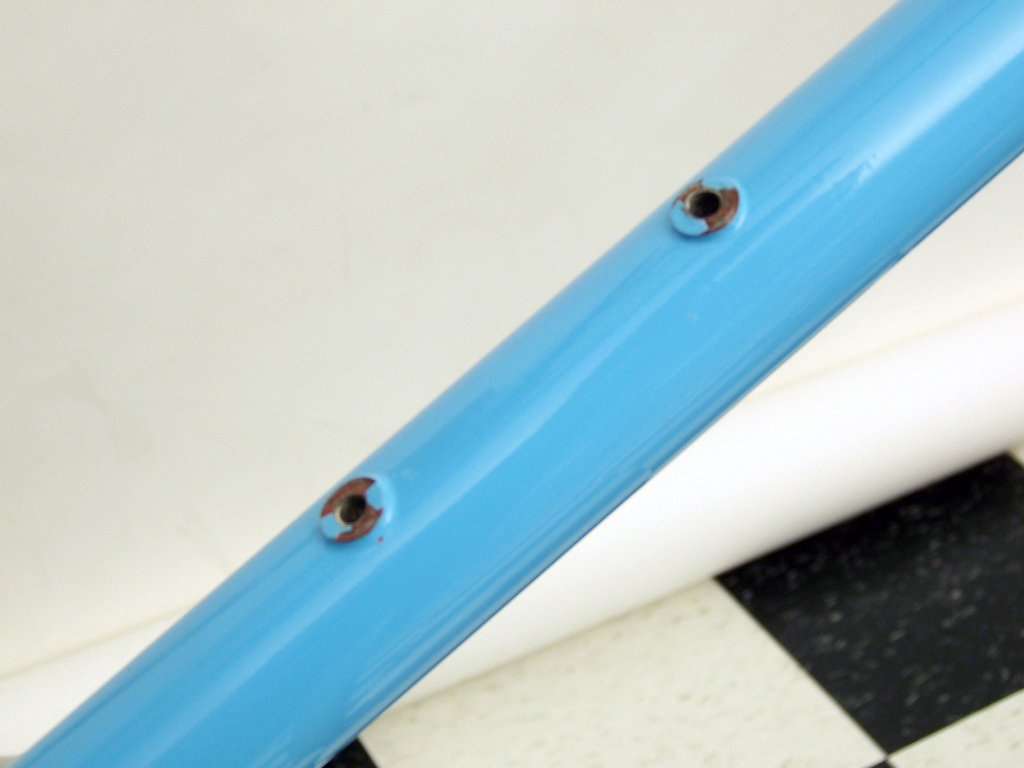
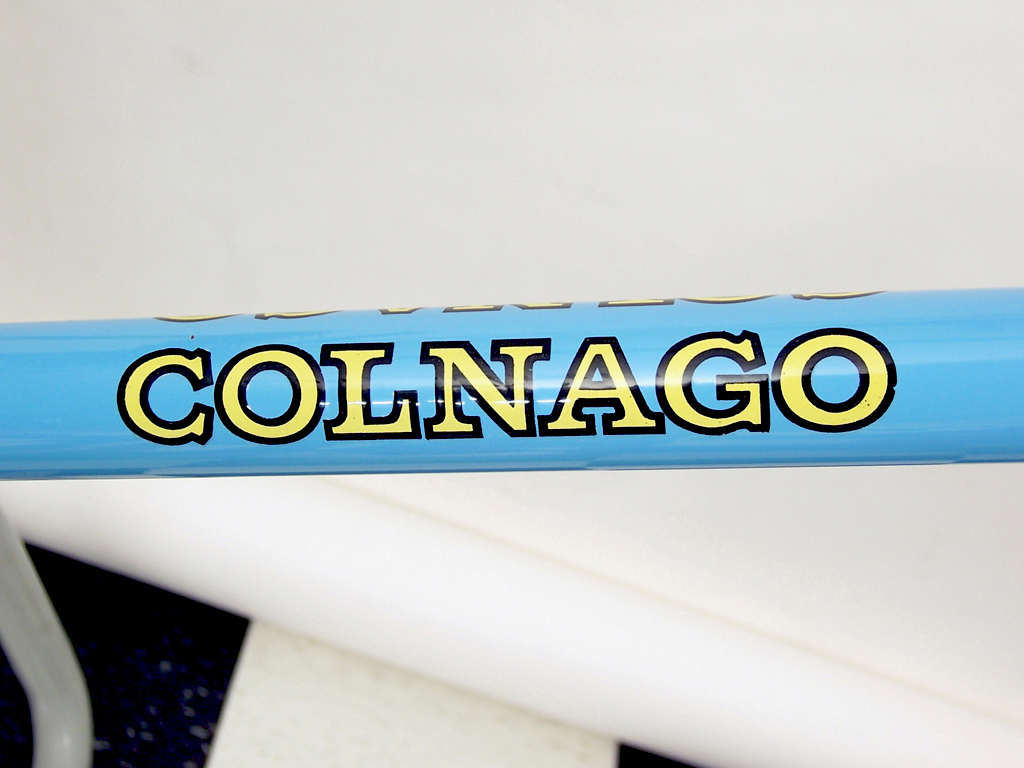
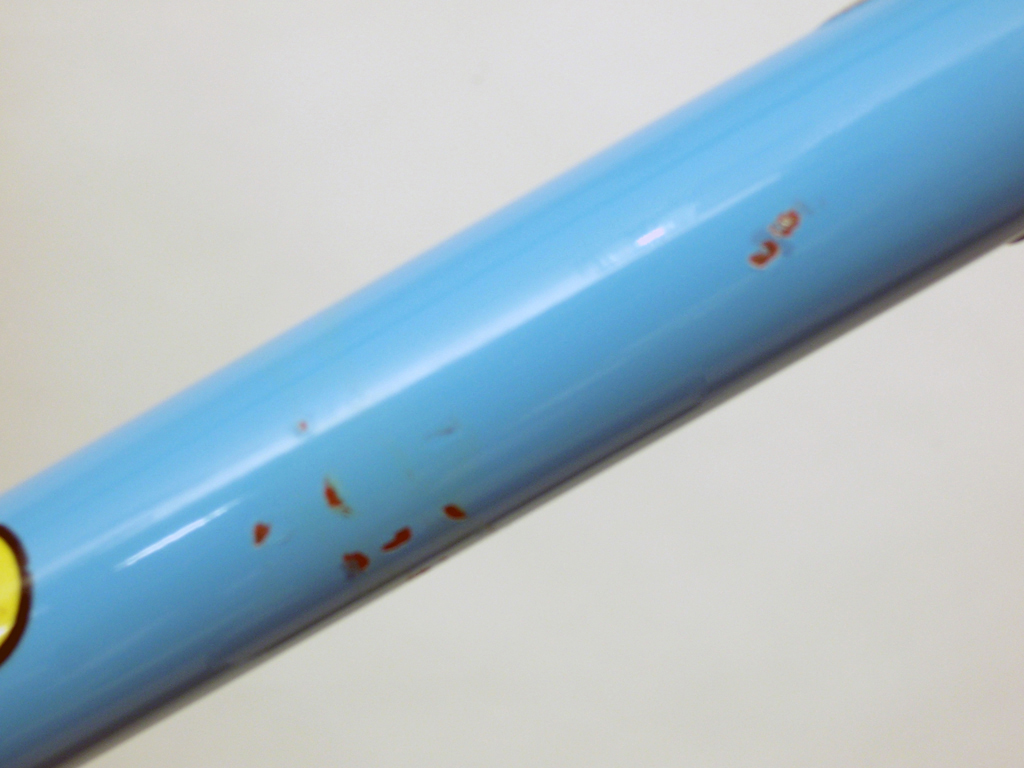
This is typical damage from the clamp-on shifters and the brake caliper hitting the down tube.
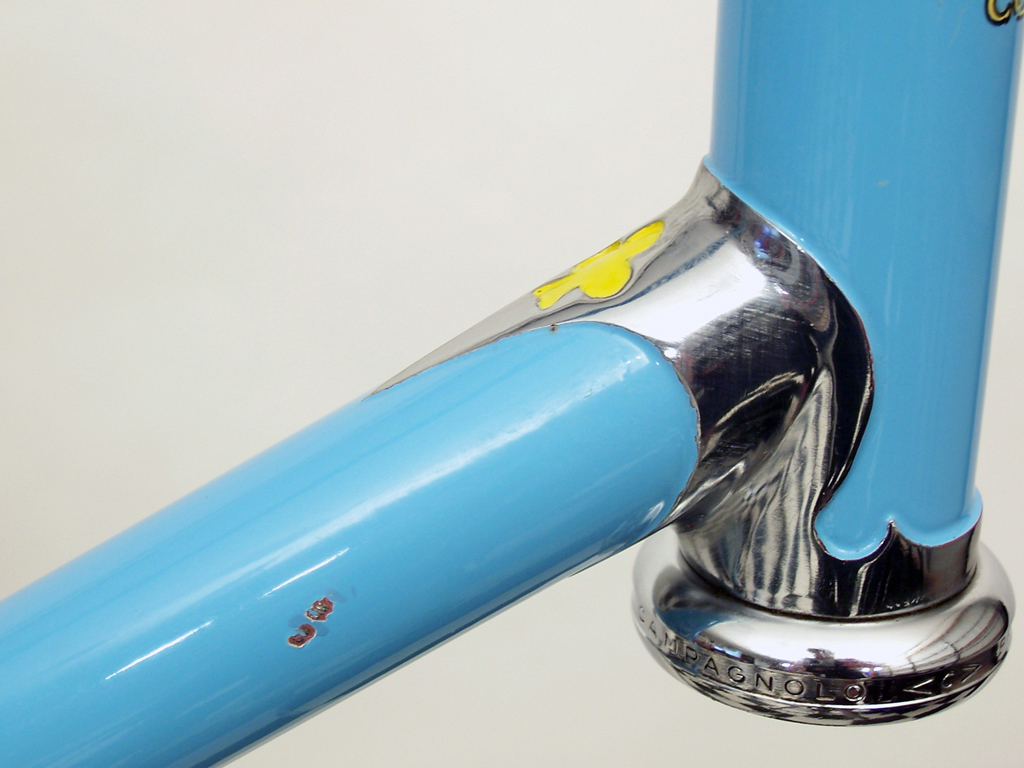
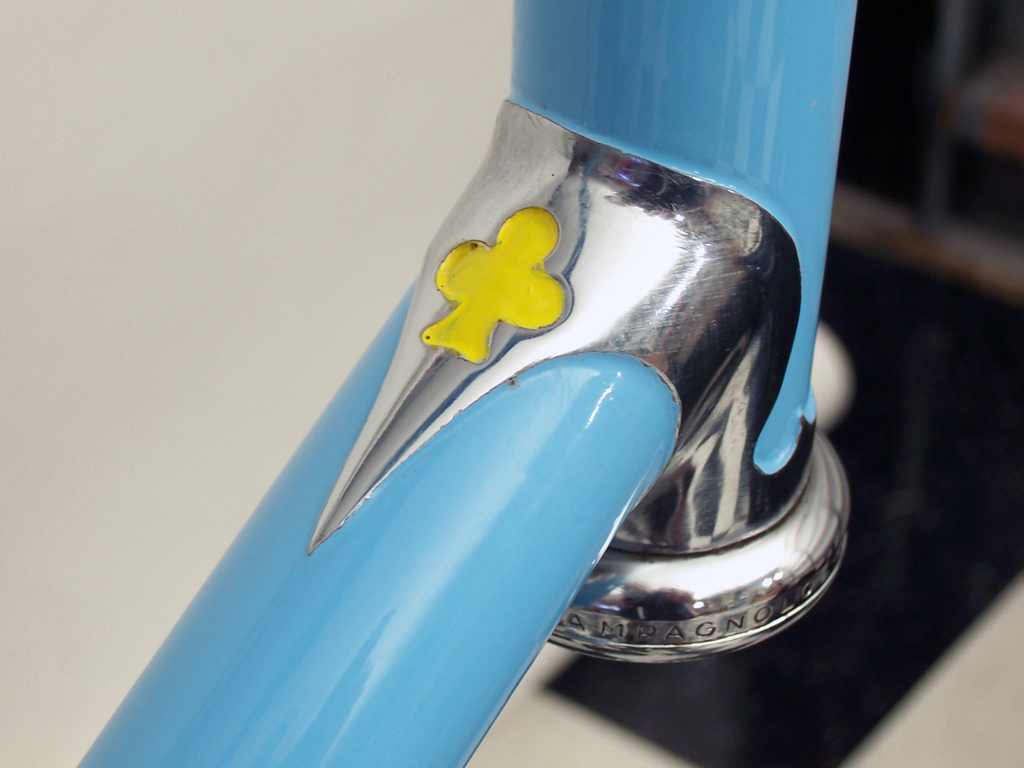
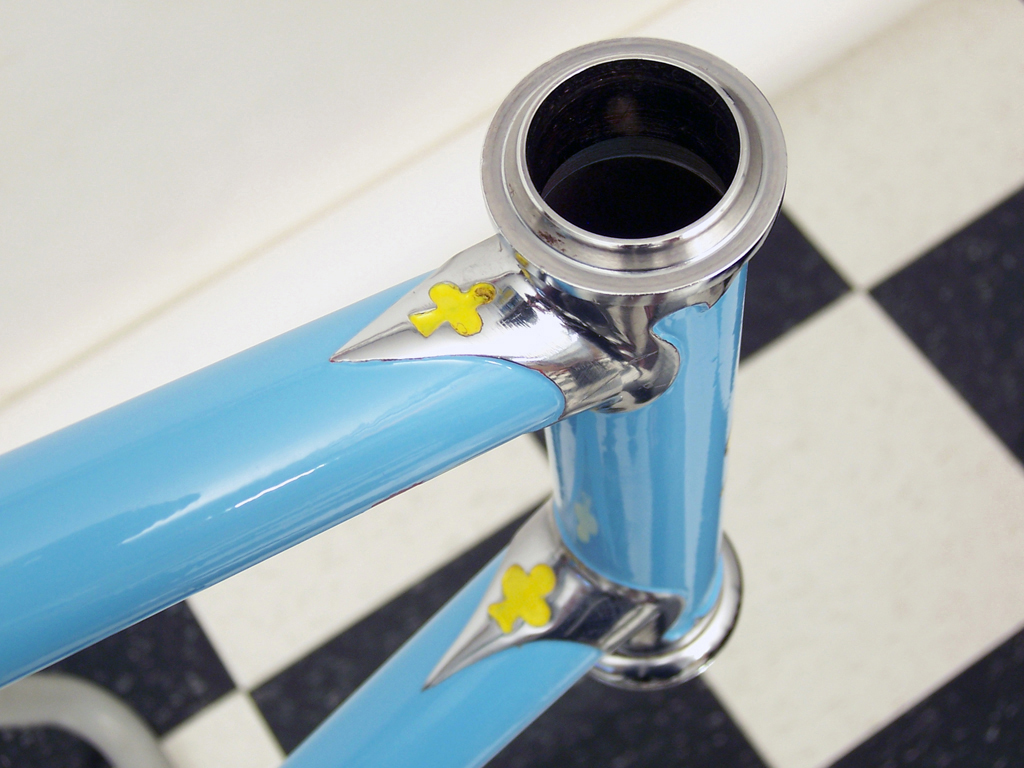
1. The chrome on the lugs (and the fork crown) is better than I could have ever expected.
2. The lower cutout is larger than the upper one, so this frame is no earlier than a 71.
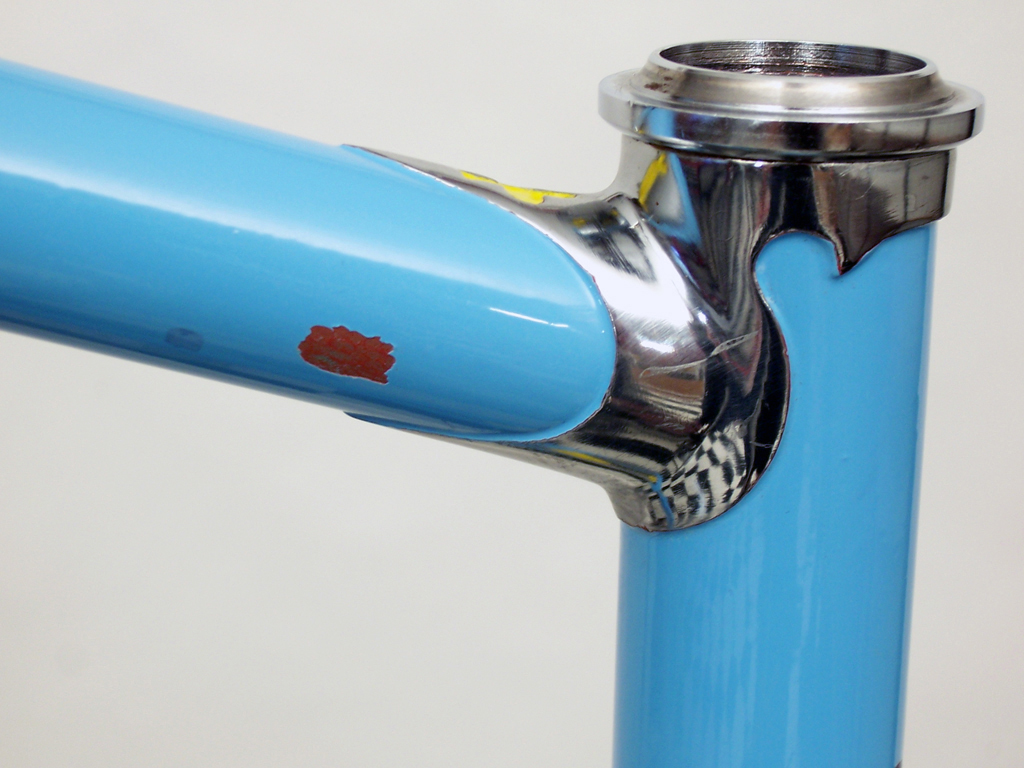
I don't know if that reddish color inside the paint is mild surface oxidation or primer - it almost looks too red to be rust. Every paint chip has the exact same reddish color.
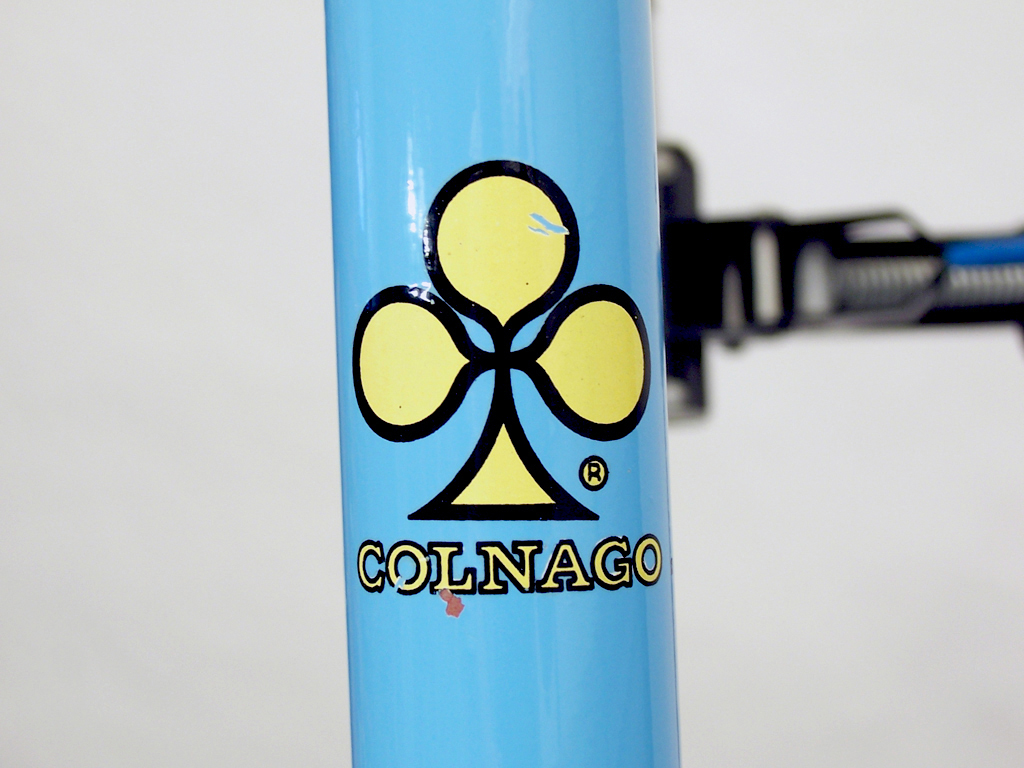
The chip below the L was smaller, but I made it bigger with my fingernail just to see what was underneath. It reinforces my suspicion that the reddish color is primer rather than rust.
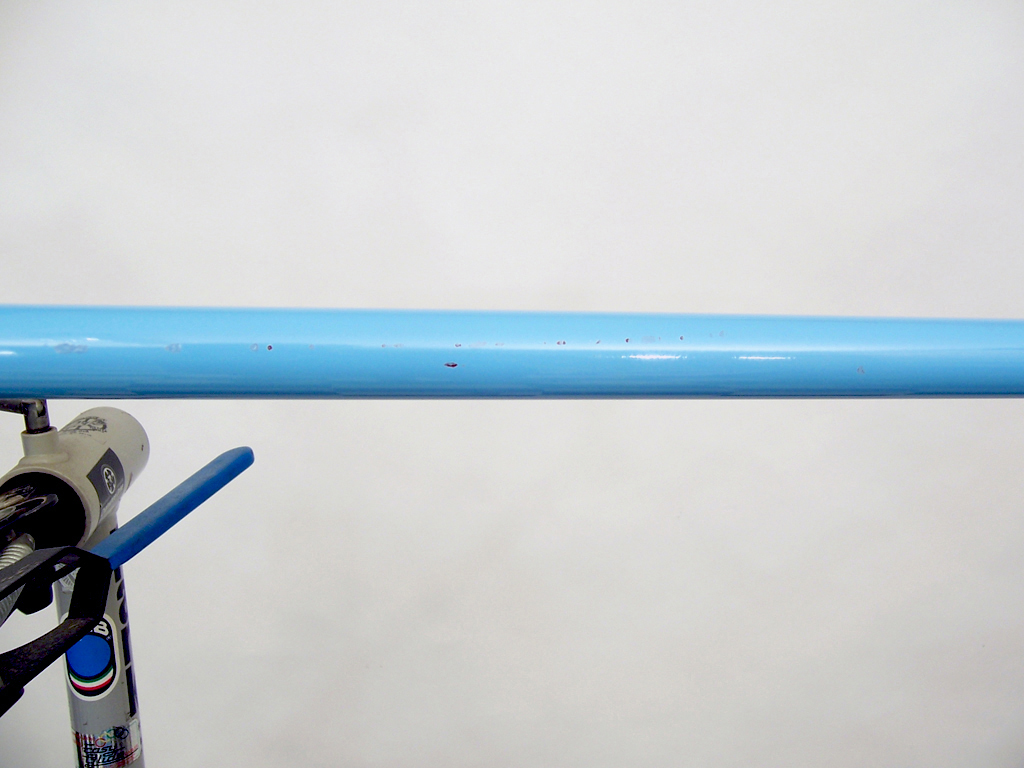
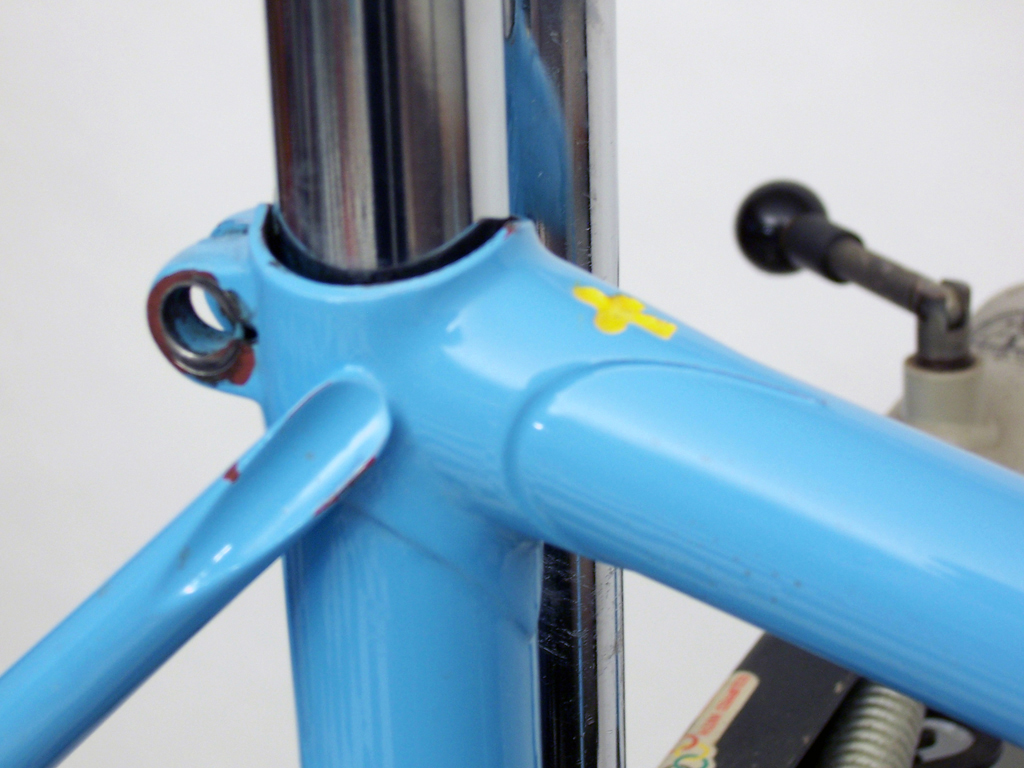
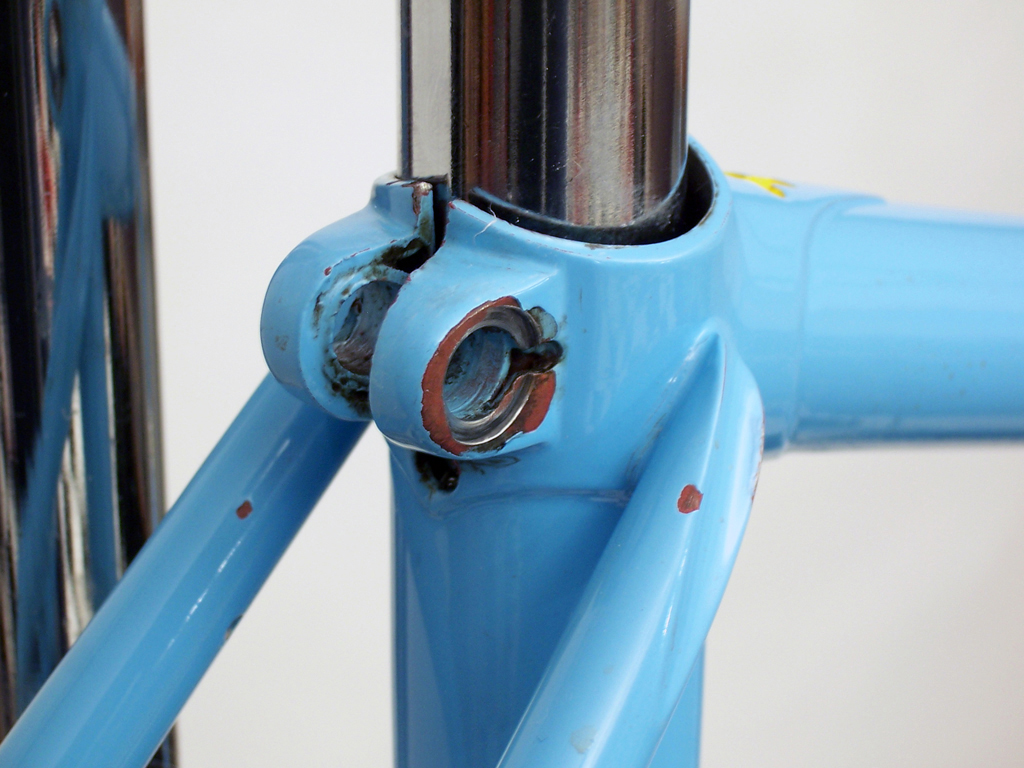
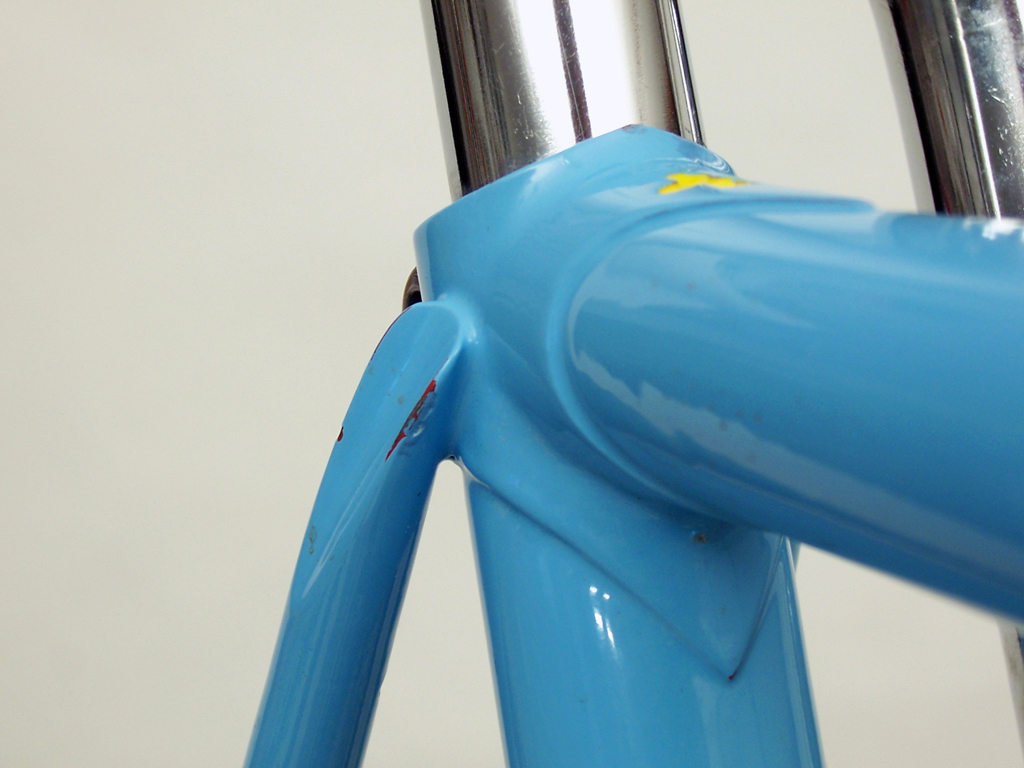
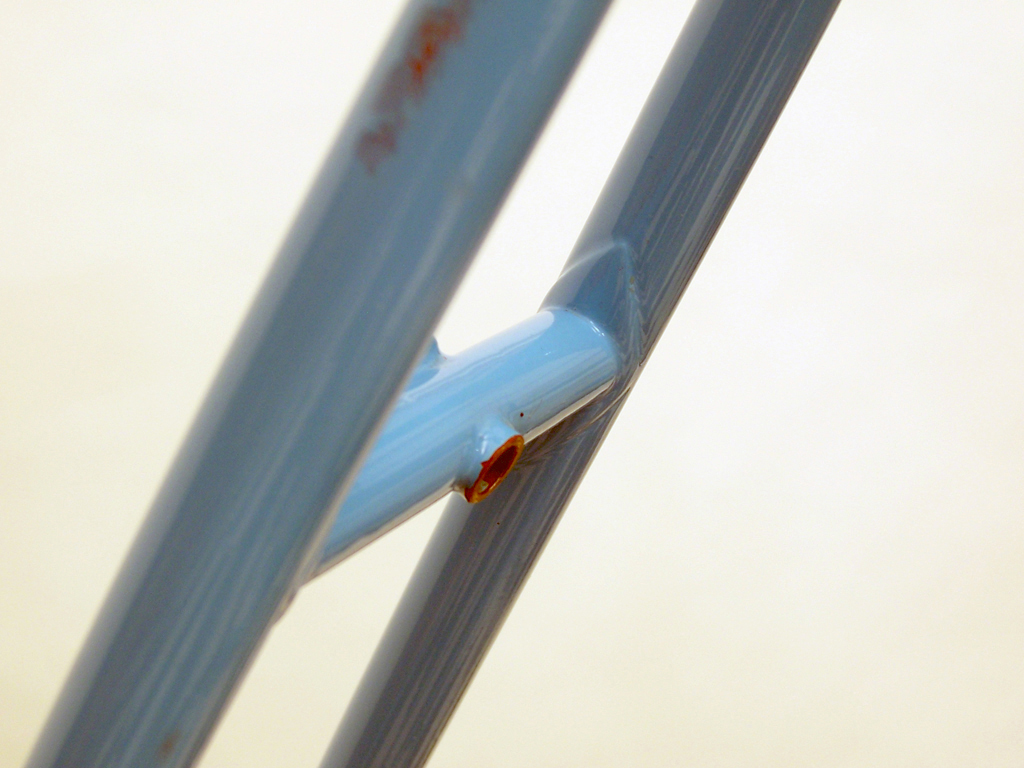
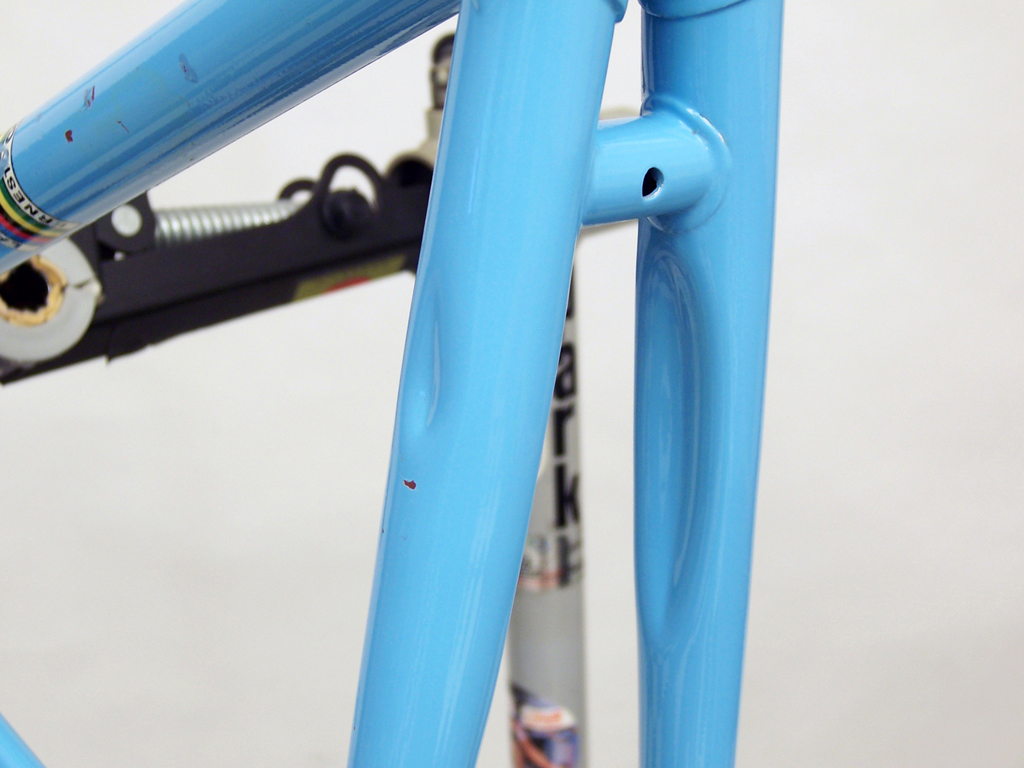
Those are some deep indentations on the inside of the chainstays.
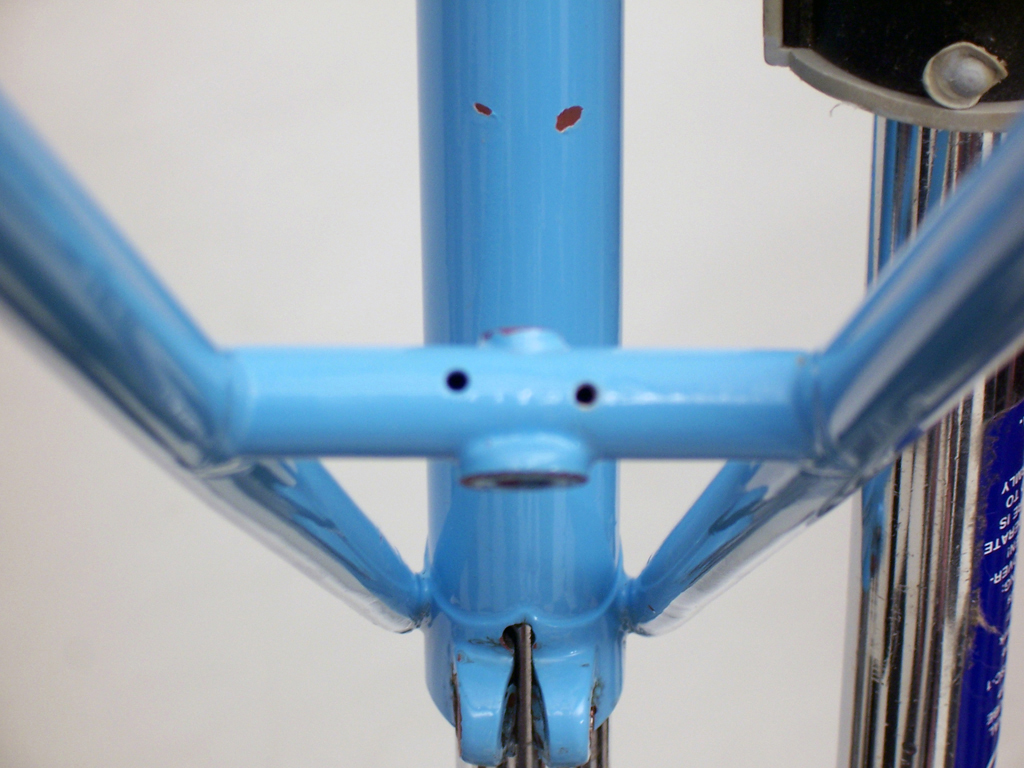
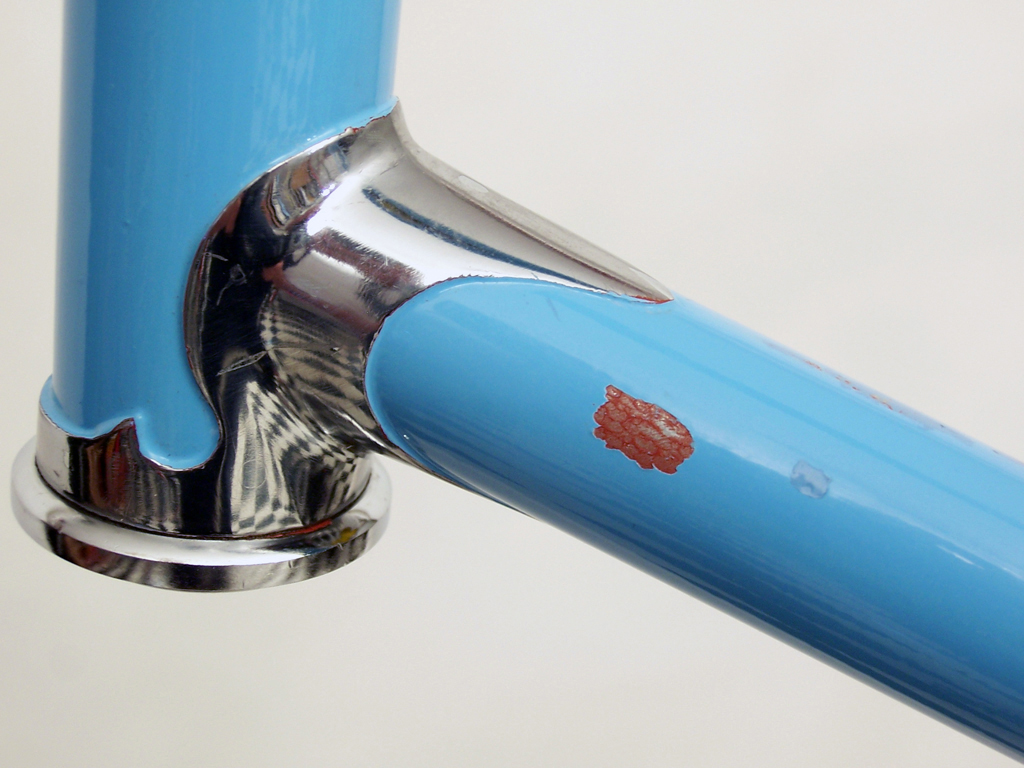
So, is that rust or primer?
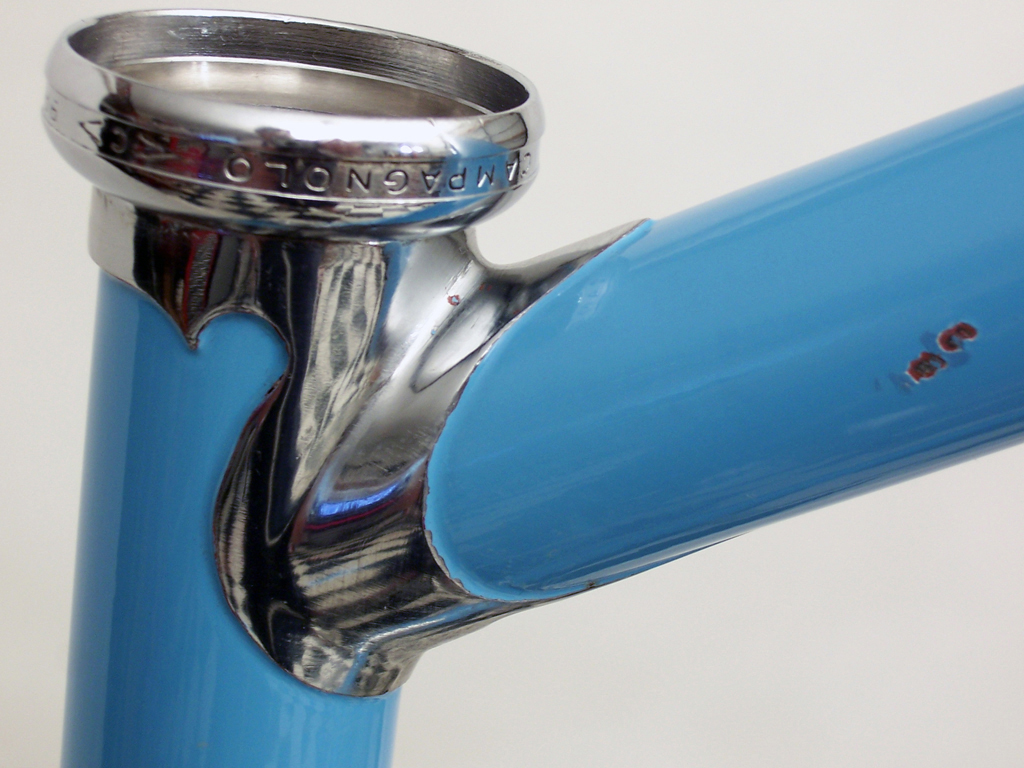
Next up, hopefully in the next couple of days, will be photos of the re-assembled bike after cleaning, paint touch and a couple of component changes. I welcome all your comments.
![]()